Succulents are high up on the list of plants a landscaper will use when creating magnificent garden arrangements. Not only are succulents beautiful but they can be functional as well.
Bees and hummingbirds are attracted to some varieties and will certainly add life to your outdoor garden. Meanwhile, there are types of succulents that can purify the air in your room.
It doesn’t matter if you’re an experienced horticulturist or a beginner. You won’t have many problems growing succulents.
These are highly durable plants that can survive for weeks without water. In fact, you should only water the soil when you have tested and confirmed 100% that it’s dry.
However, succulents need their daily dose of sunlight. Without the sun’s rays, the leaves of succulents can etiolate or stretch out as if looking for light. Etiolation can cause the leaves to lose their shape, wither, and die.
Best Low-Light Succulents
The problem is that not all regions or locations in the world are blessed with abundant sunlight. The same can be said about your homes. There are homes located in the Northern Hemisphere where their windows are facing north and don’t bring in enough sun.
The good news is that there are succulents that do well under low-light conditions. These types of succulents don’t need to be directly exposed to the sun. They will be just fine with partial sunlight.
If your home or garden isn’t bright and sunny, don’t worry. We’ve made this list of the 6 best low-light succulents you can grow outdoors or indoors.
1. Echeveria ‘Black Prince’
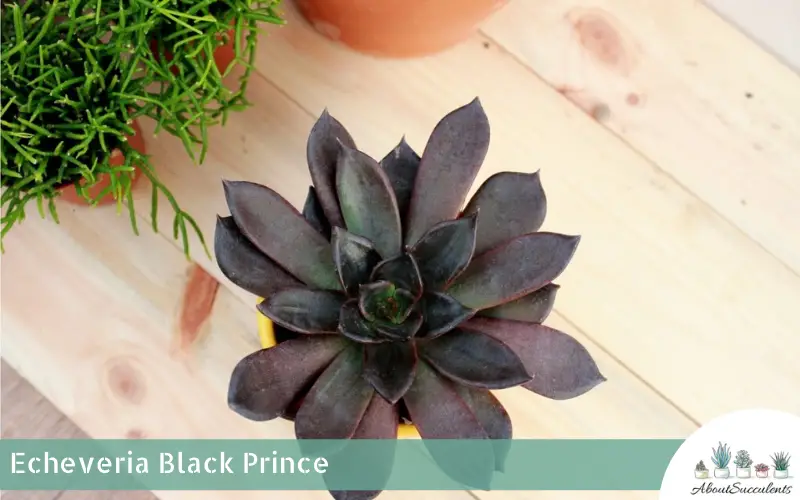
With its dark-purplish leaves, Echeveria ‘Black Prince’ is a majestic-looking succulent. When growing Black Prince, you’ll notice the leaves will start out with a green color. As it matures, the succulent’s leaves will assume its dark purple color.
Its fleshy leaves can reach a length of 3 inches (2.54 cm) and form a tight, symmetrical rosette. This is a small succulent that can only reach a height of 6 inches (15 cm).
Another name for Black Prince is ‘Black Hens and Chicks’ because it produces offsets that can be used to propagate more of the species.
The genus Echeveria originates in Mexico and is known to be durable and resilient succulents. Black Prince can thrive in low-light conditions in an outdoor garden or inside your home.
2. Schlumbergera truncata
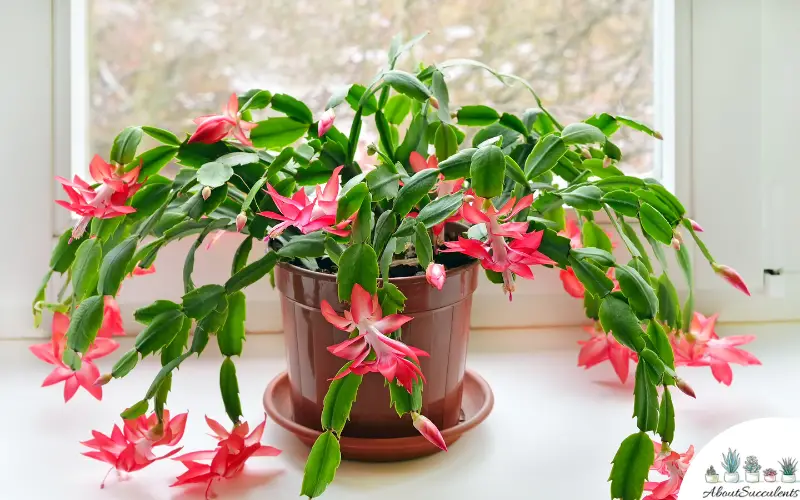
Schlumbergera truncata can be a mouthful but you can refer to it by its common names ‘Thanksgiving Cactus’ and ‘False Christmas Cactus’. What it doesn’t need is a lot of sunshine.
In fact, in order for the succulent to bloom its red-colored, tubular-shaped flowers, it would be better to grow it under low-light conditions.
One of the key steps in helping the succulent plant produce its flowers is to give it 12 to 13 hours of darkness every day. If done properly, your False Christmas Cactus will reward you with flowers sometime in late November or late January.
Thus, Thanksgiving Cactus would make a perfect houseplant. It will grow to a height of 12 inches (30 cm) before sloping out of its pot and giving the illusion of a cascading green and red fountain.
3. Senecio radicans
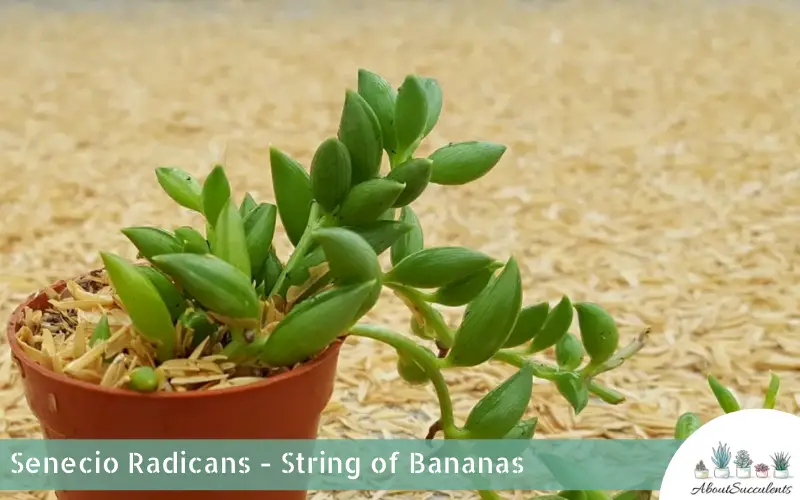
Senecio radicans is much beloved because of its charming curved shape, green-colored, and long-trailing leaves that have given the succulent its common names ‘String of Bananas’ and ‘String of Fish Hooks’.
Some horticulturists refer to Senecio radicans as ‘Curio radicans’ but every plant hobbyist is in agreement that String of Bananas makes for a lovely hanging succulent.
The leaves can trail downward for as long as 12 inches (30.48 cm). When grown in hanging baskets to adorn an outdoor patio, String of Bananas will provide natural shade to your guests.
From the months of October and December, String of Fish Hooks will bloom small, white-colored flowers that emit a pleasant scent reminiscent of cinnamon.
This is a variety of succulent plants that will grow better when exposed to partial or indirect sunlight. It’s not particularly tolerant of direct sun exposure, especially in the early afternoon. To grow Senecio radicans properly, it’s recommended to plant them behind partial shade.
4. Haworthia Concolor
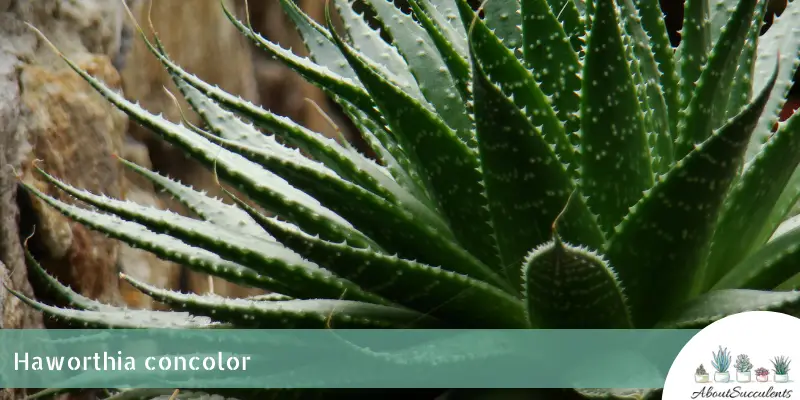
Haworthia concolor with its fleshy, spear-shaped, green-colored leaves that are covered with white spots and outlined with white margins can be described as ‘oddly-beautiful’.
The succulent plant doesn’t grow more than 6 inches (15.24 cm) in height and is an ideal addition to an outdoor rock garden or as decor in your living room, dining area, and study.
It also prefers to grow under partial or low-light conditions as its leaves are sensitive to direct sunlight. If your region experiences freezing temperatures and snowy weather, take note that Haworthia Concolor isn’t cold-hardy. Growing the succulent indoors would be your best option.
5. Sedum Clavatum
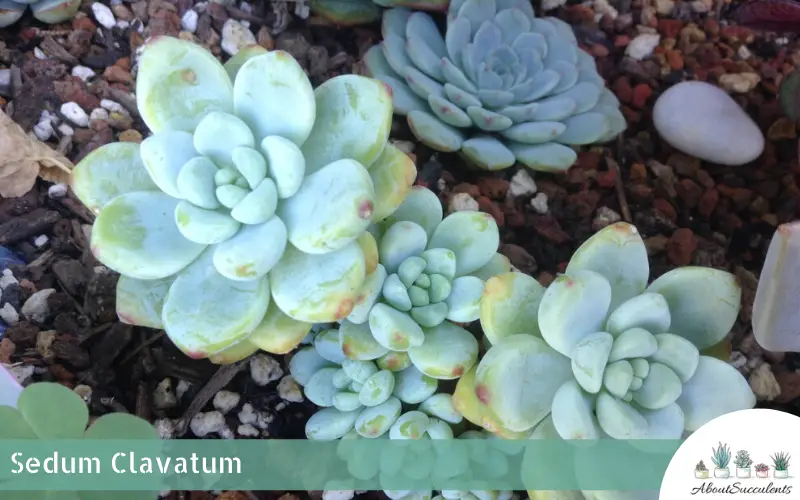
Sedum clavatum or Tiscalatengo Gorge Sedum is a low-maintenance succulent that allures and delights onlookers with its plump, compact, stubby, and light green-colored leaves with red tips that form a tight rosette as it matures.
A small succulent, Sedum clavatum can only grow to a height of 4 inches (10.16 cm) and can be a welcome display to a drab shelf case indoors, a conversation starter in the living room, or as a relaxing, stress-busting plant in your office.
It will not require a lot of sunlight to grow. Sedum clavatum only needs up to 6 hours of indirect or partial sunlight in the garden or near a window inside your home to be happy.
6. Gasteria Prolifera
Gasteria prolifera is native to Africa and is often found growing in areas with low-light conditions.
Also known as ‘Ox Tongue Plant’, this succulent is a popular one among horticulturists because of its thick, fleshy, green-colored leaves that feature unique markings on them.
The foliage grows out of a central point in Gasteria prolifera and gives this low-maintenance succulent an interesting look. For sure, you won’t have a hard time finding a suitable location for Ox Tongue Plant in your home.
In the winter or spring months, Gasteria prolifera can produce tubular-shaped flowers with pink and green colors that will look magnificent against any backdrop.
Conclusione
For people who want to get into landscaping or horticulture as a hobby but don’t get much sunshine in their area, growing succulents is the way to go.
Unlike other species of plant life, succulents can thrive under low-light conditions. What’s important is to make sure your succulents get 4 to 6 hours of exposure to partial or indirect sunlight.
Low-light succulents can be displayed as accents in your patio or an outdoor rock garden where taller varieties are planted to add height and spreading ones are used as ground cover for concrete walkways.
Growing low-light succulents indoors will contribute color and texture to minimalist-designed living spaces or simply become interesting conversation pieces for your guests.
Last Updated on Dicembre 20, 2022 by Sofia Lara